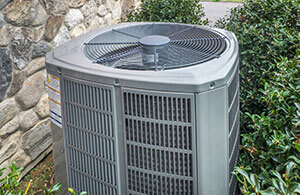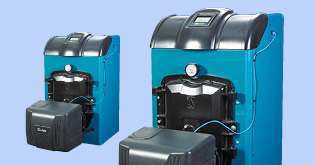- My Account:
- Sign In
- Register
- Make Payment

Ductless AC vs central air conditioning systems for your home.
For homeowners, the decision between choosing a ductless mini-split system and a conventional central air conditioning system can be a difficult one. Let us compare the major differences between the two options.
The main differences between the ductless mini-split system and a central air conditioning system are the price, amount of maintenance, and overall look of each system. Ductless mini-split units can be more expensive and are not the most attractive, but they require little to no maintenance. On the other hand, central AC systems are less expensive and virtually invisible, but they do require annual maintenance.
Ductless Mini-Split System.
A ductless mini-split system has two main components—an outdoor compressor and an indoor air-handling unit. A conduit links the outdoor unit with the indoor unit.
Advantages of a Ductless Mini-Split System.

As implied by their name, the ductless mini-split system does not require ductwork, making it the more convenient cooling option for older buildings with thick walls. It basically keeps your room temperature at constant temperature, unlike an air conditioning unit that goes on and off throughout the day. In the winter, the system works in reverse by absorbing heat from the outside air and moving it indoors to heat your home, too.
Their compact size allows for greater flexibility in temperature zoning—air conditioning is limited to the rooms in which the air handlers are located. These systems tend to run quieter than central air conditioning systems, and are easier to install. Some ductless mini-split models have the highest efficiency rating of any type of air conditioning system.
Disadvantages of a Ductless Mini-Split System.
Although a ductless mini-split can save you money in the long run, the initial installation cost can run high. It may be difficult to find qualified, professional installers. Improper sizing or placement can mean that your unit runs less efficiently. There are also some homeowners who have aesthetic issues with a wall mounted unit.
Central Air Conditioning System.

A central air conditioning system treats air at a central location and distributes it to and from rooms by one or more fans and a series of ducts. Supply ducts and registers carry this cool air from the air conditioner to the home. The air becomes warmer as it circulates through the home; then it flows back to the central air conditioner through return ducts and registers.
Advantages of a Central Air Conditioning System.
If your goal is to keep your whole house cool, central air conditioning is most likely your best option. With newer models, you can count on efficient, cool and comfortable temperatures and lower humidity.
The system is also virtually invisible, and it adds value to your home.
Disadvantages of a Central Air Conditioning System.
As with the mini-split system, you can run into cost problems if the unit has not been properly sized. (However, the upfront cost is considerably less to just replace an existing system with a new central air system rather than with a ductless mini-split system.)
To summarize, here are the main advantages and disadvantages of both systems:
| DUCTLESS MINI-SPLIT SYSTEM | |
| Advantages Small size and flexibility Easy to install Requires no ductwork Energy Efficient | Disadvantages Cost of system is high Sizing of the system can be tricky Aesthetics is an issue to some homeowners |
CENTRAL AIR CONDITIONING SYSTEM | |
| Advantages Virtually invisible Easy to install (with existing ductwork) Energy efficient Improves value of home | Disadvantages Cost of system is moderately high Unit requires annual maintenance Air ducts should be cleaned every 3-5 years |
For more information on air conditioning systems, check out When to Replace Your Central Air Conditioning System and What Is a Ductless Mini-Split AC System?

Petro Home Services is proud to not only serve communities in DC, CT, MA, MD, NJ, NY, PA, and RI but we also proudly acknowledge the skills and experience of our expert team behind all resources. With insights on topics ranging from heating oil facts to common air conditioning questions, you can rely on Petro Home Services for facts and information to help you understand more about your heating, cooling and home comfort needs. This article and all articles on the Petro Home Services website have been approved by our team of home service experts.






